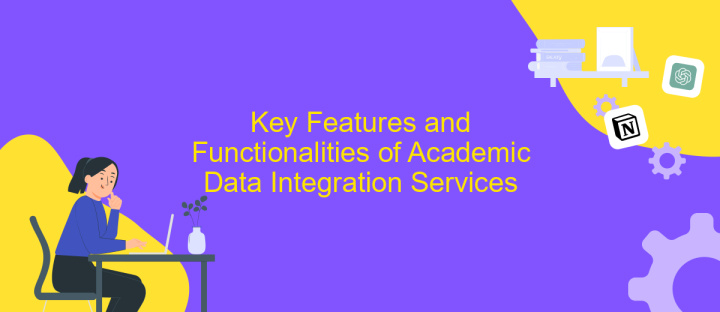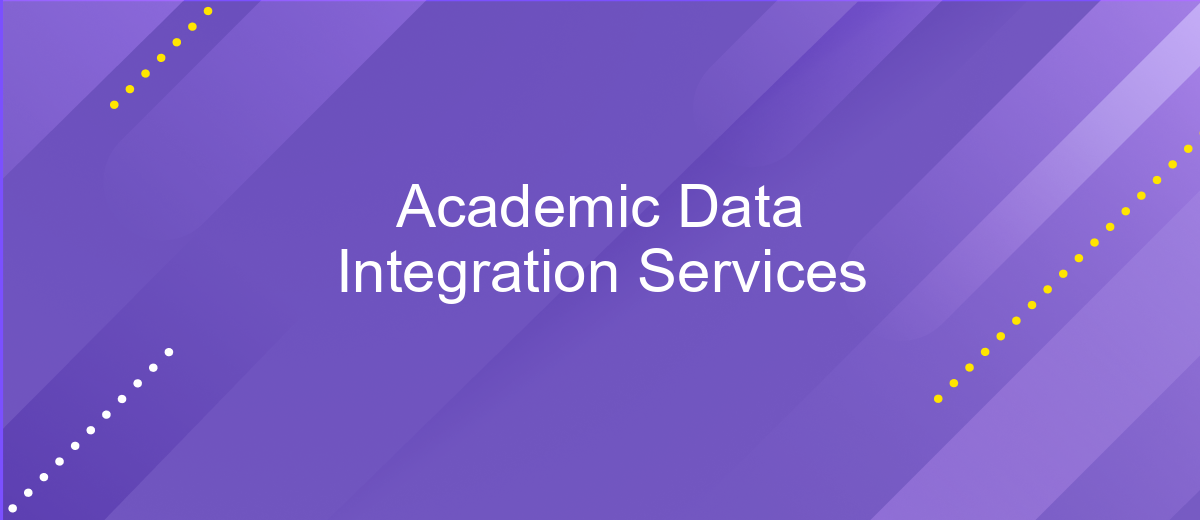Academic Data Integration Services
In today's rapidly evolving academic landscape, the integration of diverse data sources is crucial for enhancing research and learning outcomes. Academic Data Integration Services offer a comprehensive approach to consolidating data from various platforms, enabling institutions to streamline operations, improve decision-making, and foster innovation. By leveraging these services, educational organizations can unlock new insights and drive progress in an increasingly data-driven world.
Introduction to Academic Data Integration Services
Academic Data Integration Services are crucial in today's educational landscape, providing seamless access and management of diverse data sources within academic institutions. As educational systems grow more complex, the need for integrated data solutions becomes paramount. These services facilitate the consolidation of data from various departments, enhancing decision-making processes and streamlining operations. By leveraging advanced technologies, institutions can ensure data accuracy, improve collaboration, and foster innovation.
- Centralized data management: Integrates data from multiple sources into a single platform.
- Improved data accuracy: Reduces errors by automating data entry and updates.
- Enhanced collaboration: Facilitates information sharing among departments and stakeholders.
- Data-driven decision-making: Provides comprehensive insights for strategic planning.
- Scalability: Adapts to the growing data needs of educational institutions.
Implementing Academic Data Integration Services not only optimizes the operational efficiency of educational institutions but also supports their strategic goals. By ensuring data accessibility and reliability, these services empower educators and administrators to make informed decisions, ultimately enhancing the quality of education. As technology continues to evolve, the role of data integration in academia will become increasingly significant, driving the future of educational excellence.
Benefits and Challenges of Data Integration in Academia

Data integration in academia offers numerous benefits, including enhanced collaboration, improved resource management, and streamlined research processes. By consolidating diverse data sources, academic institutions can facilitate better communication among researchers, leading to more comprehensive studies and innovative solutions. Furthermore, integrated data systems enable efficient management of academic resources, such as libraries and laboratories, optimizing their usage and accessibility. This holistic approach not only accelerates research but also supports data-driven decision-making in educational policy and administration.
Despite its advantages, data integration in academia presents several challenges. Technical complexities, data privacy concerns, and the need for standardized protocols can hinder seamless integration. Additionally, institutions often face resistance to change from stakeholders accustomed to traditional data handling methods. Services like ApiX-Drive can alleviate some of these challenges by providing user-friendly platforms for automating and managing data integration processes. By addressing these obstacles, academia can fully harness the potential of integrated data systems, fostering an environment of innovation and collaboration.
Key Features and Functionalities of Academic Data Integration Services

Academic Data Integration Services are essential for seamless data management across educational institutions. These services facilitate the efficient exchange and synchronization of data between various systems, ensuring that information is consistent and up-to-date. By integrating data from multiple sources, institutions can enhance decision-making, streamline operations, and improve overall academic performance.
1. **Data Consolidation**: Combines data from disparate systems into a unified platform, providing a comprehensive view of institutional data.
2. **Real-time Data Synchronization**: Ensures that data updates are immediately reflected across all connected systems, minimizing discrepancies.
3. **Scalability**: Supports the growing data needs of institutions by easily accommodating additional data sources and users.
4. **Security and Compliance**: Implements robust security measures and ensures compliance with data protection regulations.
5. **Customizable Dashboards**: Offers user-friendly interfaces for visualizing and analyzing data according to specific institutional requirements.
By leveraging these key features, academic institutions can optimize their data management processes, leading to better resource allocation and enhanced educational outcomes. The integration services not only streamline administrative tasks but also empower educators and administrators with actionable insights, ultimately fostering an environment conducive to academic excellence.
Use Cases and Examples of Data Integration in Higher Education

Data integration in higher education is transforming how institutions manage and utilize information. By consolidating data from various sources, universities can enhance decision-making, streamline operations, and improve student outcomes. This holistic approach allows for a more comprehensive understanding of institutional performance and student needs.
One significant use case is in the realm of student analytics. By integrating data from admissions, academics, and extracurricular activities, universities can predict student success and intervene when necessary. This proactive approach helps in tailoring support services and improving retention rates.
- Enhancing academic advising by providing advisors with a complete view of a student's academic journey.
- Streamlining administrative processes, such as enrollment and financial aid, through centralized data management.
- Facilitating research by integrating diverse datasets, enabling more comprehensive and interdisciplinary studies.
- Improving campus operations by analyzing data from facilities management to optimize resource allocation.
Ultimately, data integration enables higher education institutions to become more agile and responsive. By leveraging integrated data, universities can foster a more personalized and efficient educational experience, ensuring they meet the evolving needs of students and staff alike.
Choosing the Right Data Integration Service for Your Institution
When selecting a data integration service for your institution, it's crucial to assess your specific needs and objectives. Consider the types of data you handle, the systems you currently use, and how seamlessly the service can integrate with them. Evaluate the scalability of the service to ensure it can grow with your institution's demands. Security is another vital aspect; ensure the service complies with industry standards to protect sensitive academic data.
ApiX-Drive is an excellent option for institutions seeking a user-friendly and efficient data integration solution. It offers a no-code platform, allowing easy setup and management of integrations without extensive technical expertise. With its wide range of supported applications and automated workflows, ApiX-Drive can streamline data processes, saving time and resources. Additionally, its robust security features and scalability make it a reliable choice for academic institutions aiming to enhance their data management capabilities.
FAQ
What is Academic Data Integration?
How can data integration benefit educational institutions?
What challenges are commonly faced in Academic Data Integration?
How can automation assist in Academic Data Integration?
What should be considered when choosing a data integration tool for academic purposes?
Time is the most valuable resource in today's business realities. By eliminating the routine from work processes, you will get more opportunities to implement the most daring plans and ideas. Choose – you can continue to waste time, money and nerves on inefficient solutions, or you can use ApiX-Drive, automating work processes and achieving results with minimal investment of money, effort and human resources.

